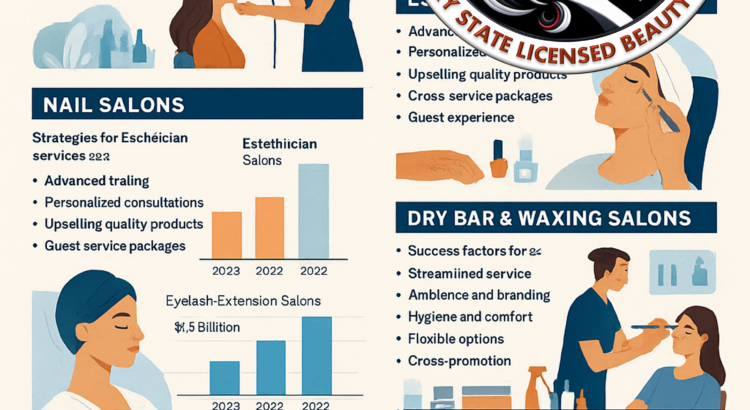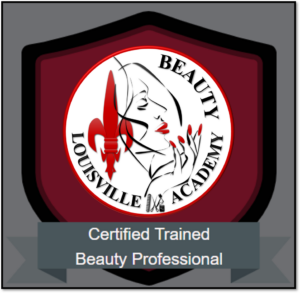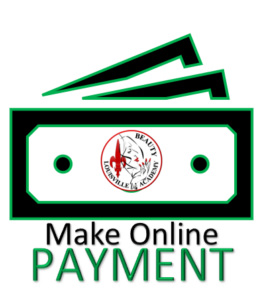The salon and beauty services industry is undergoing rapid growth and evolution. Globally, professional beauty services (salons, spas, aesthetics) reached roughly $209.8 billion in 2023, and are forecast to nearly double to $378.5 billion by 2032 (CAGR ~6.95%)fortunebusinessinsights.com. Key drivers include rising demand for specialized treatments (advanced hair services, premium skincare, etc.) and a post-pandemic resurgence in consumer spendinggrandviewresearch.comfortunebusinessinsights.com. Salons that embrace digital tools are especially poised to lead: for example, ~40% of clients now prefer online bookinggrandviewresearch.com, so technology-savvy businesses can gain a competitive edge. The market is also broadening in clientele – more men are entering beauty salons for grooming and skincare than ever beforegrandviewresearch.com – which presents new growth opportunities. In short, salons that innovate in services, customer experience, and marketing are primed to excel.
Figure: Projected global beauty salon market growth (2020–2030). The beauty salon industry rebounded strongly after 2020, with expected high-single-digit CAGR through 2030grandviewresearch.com. Major trends to watch (many driven by consumer preferences and technology) include:
- Specialization of Services: Clients increasingly seek tailored, high-end treatments. Post-COVID preferences have shifted toward specialized offerings (e.g. advanced coloring, keratin smoothing, medical-grade facials)grandviewresearch.com. Salons that focus on niche expertise (e.g. curly hair specialists, gel nail artistry, advanced skin treatments) can capture premium market segments.
- Digital Integration: Technology adoption is crucial. Salons that offer online booking, virtual consultations, and digital loyalty programs streamline client experience. Research shows ~40% of salon customers prefer booking appointments onlinegrandviewresearch.com – failure to provide this convenience can cost business.
- Client Diversity: The beauty industry is expanding beyond traditional demographics. More men are embracing grooming services (haircuts, facials, manicures)grandviewresearch.com, so inclusive marketing and service menus can increase market share.
- Experiential Focus: Consumers value experience. High-quality products, salon ambiance, and customer engagement (e.g. branded products, refreshments, social media presence) distinguish top salons. For example, major chains now launch their own product lines to deepen brand loyaltygrandviewresearch.com.
From a national perspective, the U.S. salon market mirrors these trends. Industry reports estimate ~1.5 million hair and nail salons (2023) and ~1.3 million stylists in the U.S.joinblvd.com, illustrating the market’s scale and competition. The average U.S. salon generates roughly $245K/yearjoinblvd.com, and profit margins typically hover ~8–15% depending on operations. Key performance drivers include customer retention and upselling. (For instance, salons that secure a client’s second visit dramatically improve loyaltyjoinblvd.com.)
In Louisville, KY, a metro of ~1.136 million peoplemacrotrends.net and ~$90.84 billion GDPen.wikipedia.org, the salon industry is a vibrant local business sector. Louisville’s economy and cultural scene (fashion events, sports, etc.) support strong demand for beauty services. Emerging trends here reflect national patterns: clients value convenience and innovation, and competition among salons is healthy. For aspiring salon owners and stylists in Louisville, success means combining local market knowledge with the industry best practices. Louisville Beauty Academy (LBA) – a Kentucky state-licensed and state-accredited beauty college – plays a critical role in preparing local talent to lead this marketlouisvillebeautyacademy.netlouisvillebeautyacademy.net.
Hair Salons
Hair salons remain the cornerstone of the beauty industry. In the U.S., hair-related services generate ~92% of salon revenuegrandviewresearch.com. According to industry data, haircuts and styling alone account for ~62% of this revenue, with coloring and treatments making up another ~23%grandviewresearch.com. (For example, balayage and vibrant color trends have driven up color service sales.) After the pandemic, consumer comfort with visiting salons is high: ~64% of respondents already feel comfortable returning for hair servicesgrandviewresearch.com. Key national stats illustrate the scale: there are hundreds of thousands of licensed hairstylists in the U.S. and nearly 1.5 million hair and nail salons combinedjoinblvd.com. Although specific Louisville figures are hard to pin down, Louisville-area stylists benefit from the metro’s population of over one million, translating to ample clientele.
Key strategies for leading in hair salons:
- Stay at the cutting edge of techniques: master trending treatments (e.g. balayage, keratin smoothing, advanced color correction). Continuing education in new styles and tools is crucial.
- Exceptional customer experience: Provide personalized consultations and loyalty perks (e.g. membership programs, referral bonuses). Salons that listen to clients often build stronger retention.
- Leverage online presence: Maintain an active social media portfolio of before/after photos and offer easy online booking. Research shows tech-friendly salons grow fastergrandviewresearch.com.
- Local branding: Emphasize community ties (e.g. participating in local events or charitable styling days). As Louisville grows culturally, stylists who position themselves as local trendsetters will stand out.
Nail Salons
Nail services are another large segment. In North America, nail salons generated about $3.98 billion in revenue in 2023grandviewresearch.com. The U.S. nail industry is expected to grow at ~6.3% CAGR, reaching $4.34 billion by 2030grandviewresearch.com (consistent with ~6.8% growth projected for North Americagrandviewresearch.com). Manicures remain the single largest service, and there is rapid growth in enhancement services: UV-gel overlays, acrylic and dip powder nails are especially populargrandviewresearch.com. Louisville nail salons should note these trends: gel extensions and intricate nail art have higher revenue potential than basic services.
Figure: Nail technology and artistry are evolving. Savvy nail salons stay updated on new polish systems (gel, dip, art) and maintain the highest hygiene standards to attract clients.
Keys to success in nail salons:
- Master specialty treatments: Offer gel-polish manicures, acrylics, sculpted designs and nail art. Training on the newest techniques will justify premium pricing.
- Focus on hygiene and comfort: Nail salons must maintain impeccable sanitation and customer comfort (sanitized tools, ergonomic chairs) – clients expect this as basic quality.
- Retail opportunities: Sell high-quality nail care products (cuticle oils, strengtheners). This can boost revenue and client loyalty between visits.
- Customer retention: Encourage packages (e.g. monthly manicure memberships, spa bundles). Loyal regulars are the foundation of a profitable nail business.
Esthetician Salons (Skin & Beauty)
Esthetician salons (facials, skincare, waxing, etc.) are benefiting from the booming personal wellness trend. Consumers increasingly view skincare as routine health maintenance. While hard numbers for “esthetician salons” alone are limited, the overall skin care market is growing rapidly. Factors boosting this segment include higher disposable income for beauty spending and heavy social media influence on skincare trends. Services like facials, peels, microdermabrasion, and medical esthetic treatments are in demand. Many salons now combine skin and beauty services: for example, it’s common to get a facial, nail polish change, or waxing all in one visit.
Figure: A professional esthetician offers a variety of skincare and beauty treatments. Successful estheticians stay current with advanced skincare techniques (e.g. dermaplaning, peels) and offer a serene spa environment.
Strategies for esthetician services:
- Advanced training: Stay certified in the latest skincare treatments (LED therapy, microcurrent facials, specialized masks). Clients are willing to pay for visible results from certified professionals.
- Personalized consultations: Conduct thorough skin assessments and recommend tailored regimens. Building trust as a skincare expert leads to repeat business.
- Upsell quality products: Many estheticians increase revenue by retailing premium skincare lines (moisturizers, serums). Choose brands that align with effective treatment outcomes.
- Cross-service packages: Combine services (e.g. facial + eyebrow wax) for convenience. The one-stop-shop model appeals to busy clients.
- Guest experience: Create a relaxing spa-like atmosphere and encourage online reviews. A soothing environment and excellent service drive word-of-mouth growth.
Eyelash Extension Salons
Eyelash extensions have emerged as a fast-growing beauty niche. Globally, the eyelash extension market was about $1.5 billion in 2023 and is projected to reach $3.2 billion by 2032 (CAGR ~8.5%)dataintelo.com. Louisville clients, particularly younger women, have shown strong interest in lash extensions and related services (lash lifts, brow lamination). Demand is driven by social media beauty influencers and a desire for low-maintenance daily beauty. Because eyelash work is intricate and health-sensitive, the market rewards highly skilled, certified technicians.
Figure: The eyelash extension business is booming. Top salons train rigorously (certification) and use premium lash products to meet rising demanddataintelo.com.
Keys for eyelash extension specialists:
- Professional certification: Invest in accredited lash certification programs. Safe, sanitary application (often involving specialty adhesives) is non-negotiable. Clients will pay more to ensure healthy eyes.
- Customization: Offer a range of lash styles (classic, volume, hybrid) and lengths. Personalize each set to the client’s eye shape and preferences.
- Portfolio marketing: Showcase before-and-after photos on social media to attract new customers. High-quality imagery and testimonials build credibility.
- Client retention: Encourage clients to return every 2–3 weeks for fills, and educate them on proper home care. Subscription or membership plans can stabilize income.
- Expand offerings: Pair lash extensions with complementary services (eyebrow tinting/lamination, lash lifts) to maximize revenue per client.
Dry Bar & Waxing Salons
Dry bars (focused blowout/style salons) and waxing boutiques represent specialized service models. Dry bars (blowout-only hair salons) became popular for offering quick, affordable styling: the average blowout at a dry bar is often much higher-margin than a simple haircut. While exact market size is niche, the success of brands like Drybar shows demand for convenient, quality blowouts and styling. Waxing salons cater to the perennial demand for hair removal (brows, body waxing, facials). Combining these (many “blow-dry bars” also offer waxing) can attract busy clients who want efficient services in one stop.
Figure: Dry bar salons focus on styling (no cuts) and often have creative branding. Waxing boutiques emphasize hygiene and quick service. Both rely on speed and quality to attract repeat clients.
Success factors for dry bar/waxing salons:
- Streamlined service: Minimize wait times – consider memberships (e.g. “Blowout Club”) or appointment-only models for efficiency. A predictable 30-60 minute service appeals to busy professionals.
- Ambience and branding: Many dry bars differentiate with inviting decor, refreshments, and friendly staff. Branded products (signature shampoo or oils) extend the salon experience home.
- Hygiene and comfort: For waxing, rigorous cleanliness and skilled technicians are critical. Clients must feel safe (e.g. use of disposable liners, proper techniques) in order to trust the service.
- Flexible options: Offer group or private bookings (bridal parties, corporate bookings). Some dry bars host events or mobile services for additional revenue.
- Cross-promotion: Since these salons often serve beauty-conscious clients, partner with local nail salons or spas for referral exchanges.
Combination Salons (Full-Service)
Combination salons bundle multiple beauty services under one roof (e.g. hair, nails, skin, lashes). These full-service salons cater to clients who prefer the convenience of “one-stop shopping.” Industry data suggests cosmetologists who hold dual licenses (hair and nails, for example) can capture more revenue by cross-sellinglouisvillebeautyacademy.net. In Louisville’s diverse market, salons that effectively offer multiple specialties gain competitive advantage.
Figure: Full-service cosmetologists can provide hair, nails, skin and more. Combining services (and certifications) allows salons to maximize client value – for example, a haircut client might also get a nail or brow service in the same visit.
How to excel in combination salons:
- Comprehensive training: Staff should be cross-trained in multiple disciplines. For instance, a licensed cosmetologist can legally offer hair and nail serviceslouisvillebeautyacademy.net, expanding the salon’s service menu. (Louisville Beauty Academy’s curriculum reflects this by including cosmetology, nail, esthetic and specialty courses.)
- Bundled packages: Create package deals (e.g. “Head-to-Toe Makeover”) that encourage clients to try new services. This increases average ticket size and exposes customers to all salon offerings.
- Efficient layout: Design your salon floor to accommodate multiple services (separate areas for hair, nails, spa treatment rooms, etc.). A well-organized space allows seamless client flow between services.
- Unified branding: Even though you offer many services, maintain a cohesive brand image and service standard. Clients should experience the same level of quality from stylists to estheticians.
- Client education: Advise clients on complementary services (e.g. “Your color looks great with a gel manicure!”). Educated clients often book additional services on follow-up visits.
Education & Training: Louisville Beauty Academy
A key factor in “being number one” is expertise. Louisville Beauty Academy (LBA) is central to Kentucky’s salon industry by training tomorrow’s top professionals. LBA is Kentucky’s state-licensed and state-accredited beauty collegelouisvillebeautyacademy.net. It offers hands-on programs in cosmetology, esthetics, nail technology, eyelash extensions, and instructor training – all aligned with Kentucky licensing requirementslouisvillebeautyacademy.netlouisvillebeautyacademy.net. The academy emphasizes “work-ready skills” so that graduates hit the ground runninglouisvillebeautyacademy.net. Notably, over 90% of LBA students pass their state licensing exams on the first attemptlouisvillebeautyacademy.net, reflecting the quality of instruction.
LBA also ensures students train with industry-leading products. Every new student kit contains top brands required by Kentucky’s board: for example, Dermalogica skincare for esthetics, OPI/CND for nail tech, Wella color lines for hair, and Chi tools for stylinglouisvillebeautyacademy.net. Access to such professional-grade supplies and up-to-date techniques gives students a competitive edge. Moreover, LBA’s flexible scheduling and scholarships make education accessible; it even provides Spanish and Vietnamese exam support to empower Louisville’s diverse community.
Keys for aspiring salon leaders:
- Start with solid education: Enroll in an state-accredited, state-licensed school (such as LBAlouisvillebeautyacademy.net) to gain comprehensive training and licensure preparation.
- Get licensed and certified: Beyond state exams, pursue advanced certificates (e.g. medical esthetician, specialized nail techniques). High qualifications attract clients.
- Commit to ongoing learning: The beauty industry evolves rapidly. Top professionals attend workshops, trade shows, and advanced courses to stay current.
- Build business acumen: Understanding salon management (inventory, marketing, staffing) is as important as technical skill. Many leaders learn by seeking mentorship or business courses.
- Network and brand yourself: Participate in local events, collaborate with peers, and maintain a strong social media presence. A strong personal brand and community ties (e.g. offering pro bono services for causes) elevate one’s profile.
Outlook and Motivation
The future of Louisville’s salon industry looks bright. With metro population growthmacrotrends.net and increasing demand for premium salon services, there is ample opportunity for businesses that differentiate themselves. By embracing the trends above – from technology integration to specialized skill-building – a salon can rise to the top of the market. Louisville Beauty Academy’s mission to “empower aspiring beauty professionals”louisvillebeautyacademy.net means that local students have the resources to become those leaders. In summary, the path to being number one in the salon business lies in top-quality education (like that at LBA), continuous adaptation to industry trends, and an unwavering commitment to outstanding service. The next generation of Louisville salon owners and stylists is poised to shine; with the right skills and drive, they can set the standard for excellence in Kentucky and beyondlouisvillebeautyacademy.netlouisvillebeautyacademy.net.
Table 1. Market Size and Growth (Selected Salon Sectors)
| Segment | Market Region | 2023 Value (USD) | Forecast | CAGR |
|---|---|---|---|---|
| Professional Beauty Services | Global | $209.78 Bfortunebusinessinsights.com | $378.47 B (2032) | 6.95%fortunebusinessinsights.com |
| Nail Salons | North America | $3.976 Bgrandviewresearch.com | $6.313 B (2030) | 6.8%grandviewresearch.com |
| Nail Salons | United States | $2.828 Bgrandviewresearch.com | $4.338 B (2030) | 6.3%grandviewresearch.com |
| Eyelash Extensions | Global | $1.5 Bdataintelo.com | $3.2 B (2032) | 8.5%dataintelo.com |
Sources: Market research reports and industry analysesfortunebusinessinsights.comgrandviewresearch.comgrandviewresearch.comdataintelo.com (data reflects latest available 2025 estimates and forecasts through 2030/2032).






